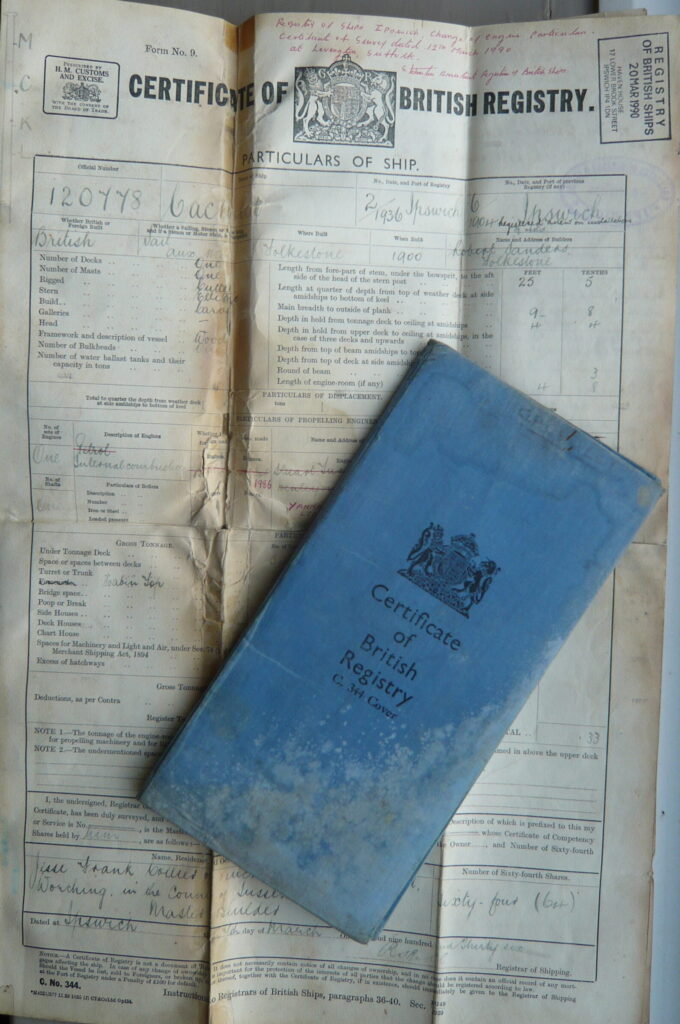
An auxiliary engine & more owners: 1934 – 1939
The first entry in the Certificate of British Registry lists Jesse Frank Collier, Master Builder from Worthing, Sussex as the owner in March, 1936. The Certificate also refers to an auxiliary petrol internal combustion engine, 1934, Stuart Turner, 2 cylinder, 6hp. We assume this to be her first auxiliary engine.

Perhaps her most illustrious owner, Sir Lancelot Henry Elphinstone, is listed in the Certificate of British Registry as a Barrister, and owning ‘Cachalot’ from 8 April, 1936. We know a little about his military career, but sadly, nothing about his interest in ‘Cachalot’ and he sold her after only four months to two stock brokers; Herbert Charles Norton, Stock Jobber from Amersham, Bucks., and Hugh Leycester Bedwell, Stock Broker from Warwick Square, London in August, 1936 listed in the Certificate of British Registry. The Lloyds Register lists two boats named ‘Cachalot’ in 1936, neither of which is ours.
Checking Census returns and Newspaper archives we find Hugh Leycester Bedwell, born 1902 of 29, Gloucester Street, London was married to Miss Gwendolen Mary Patrick at Craigs Parish Church, Glarryford, Co. Antrim on 4 February, 1937. They returned to live in London.
In the 1939 Register Herbert Charles Norton, born 1906 was living at Little Hertfordshire House, Amersham and listed as a ‘Royal Naval Volunteer, Supplementary Reserves’. It seems likely that is was Norton who took ‘Cachalot’ to Dunkirk when requisitioned for ‘Operation Dynamo’ in 1940.




